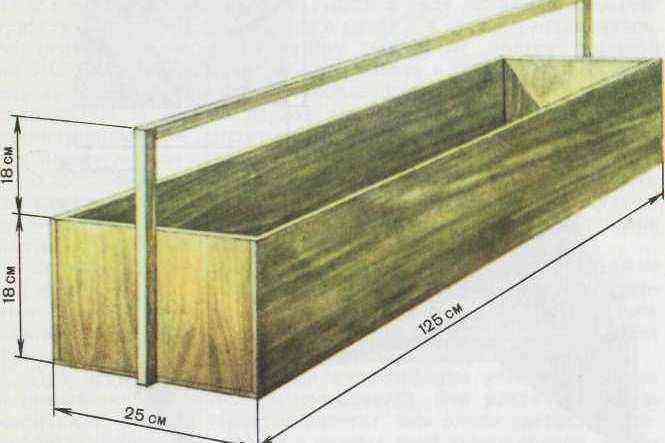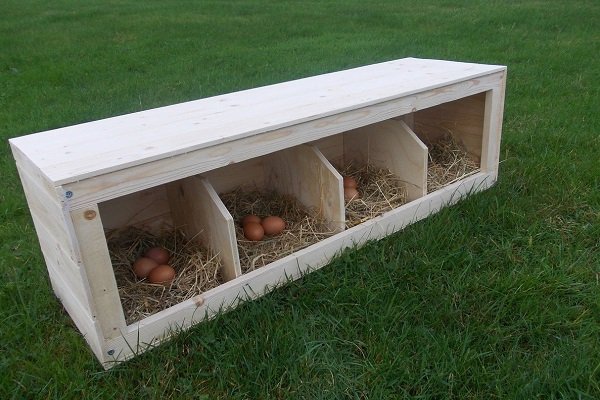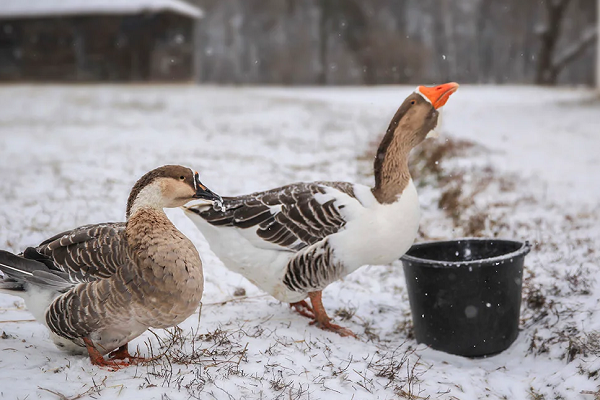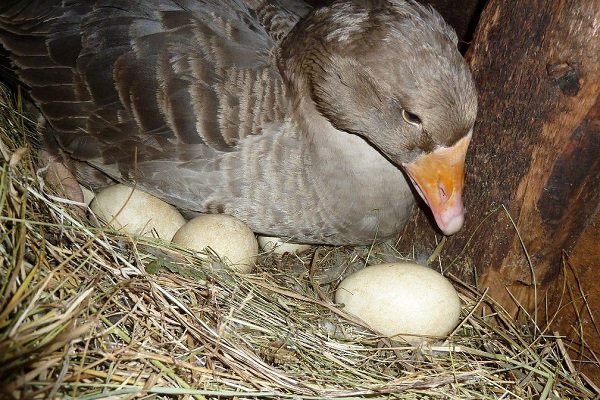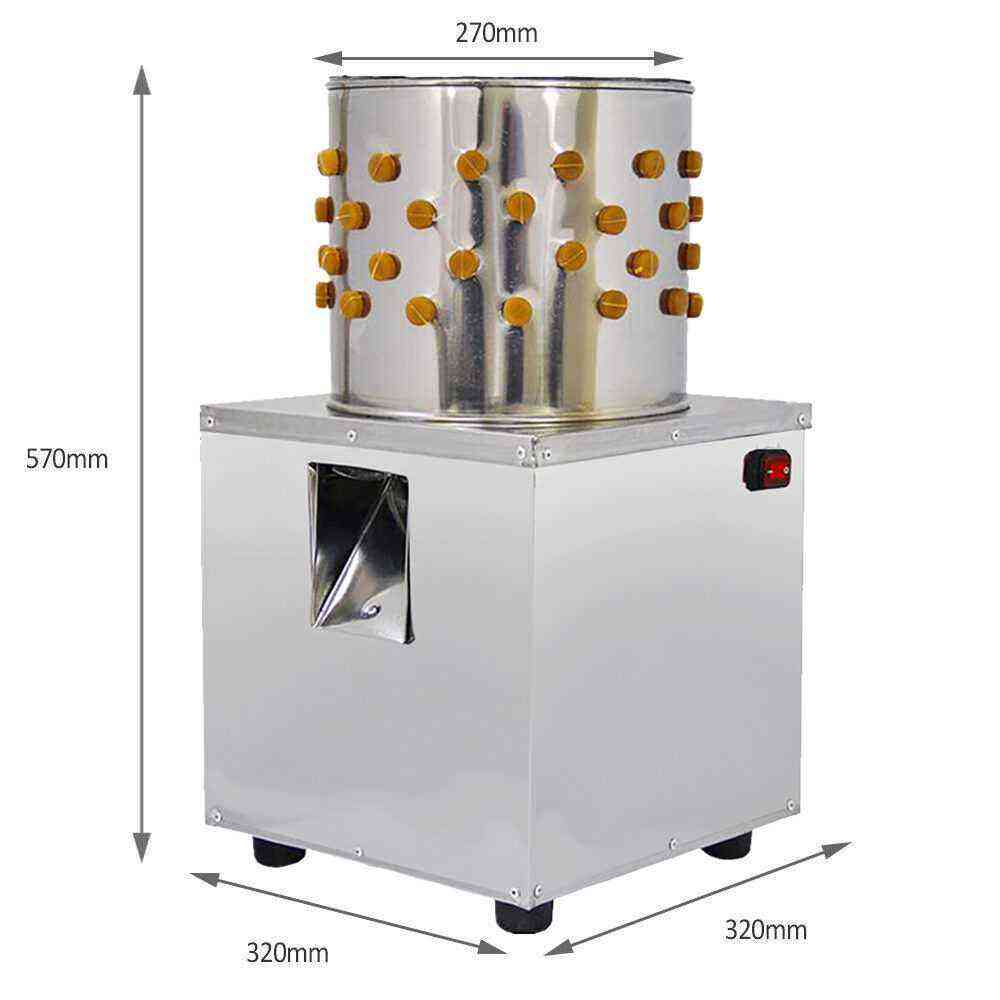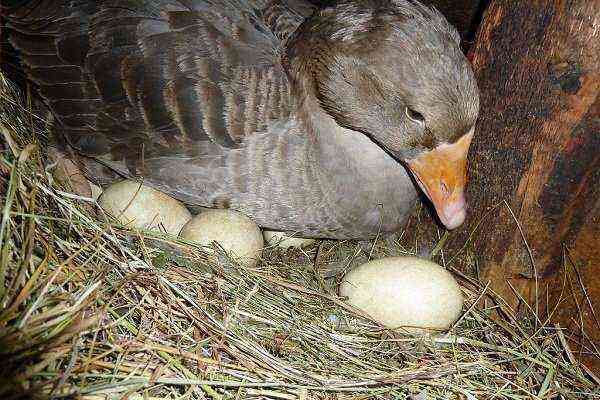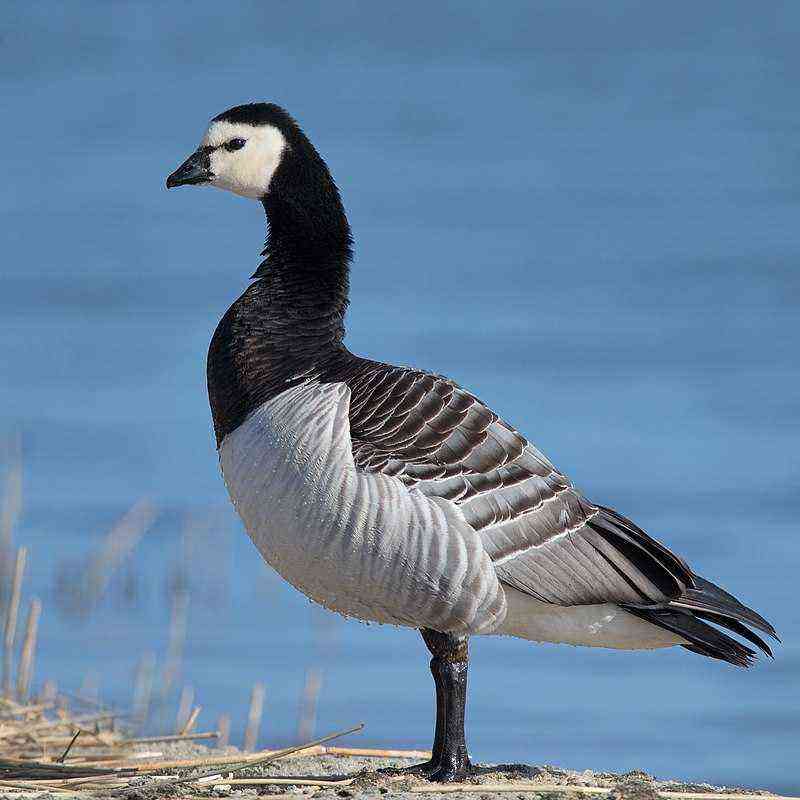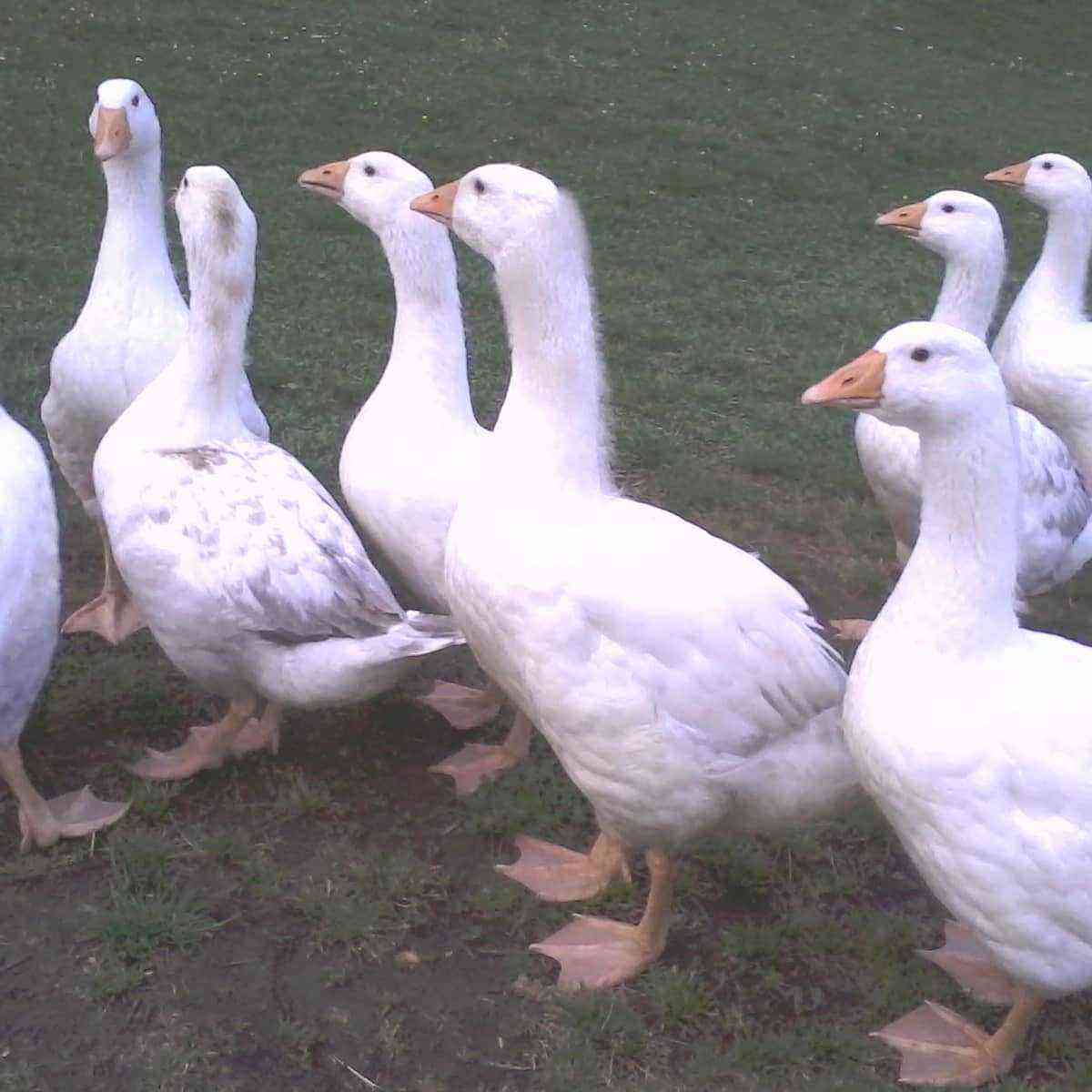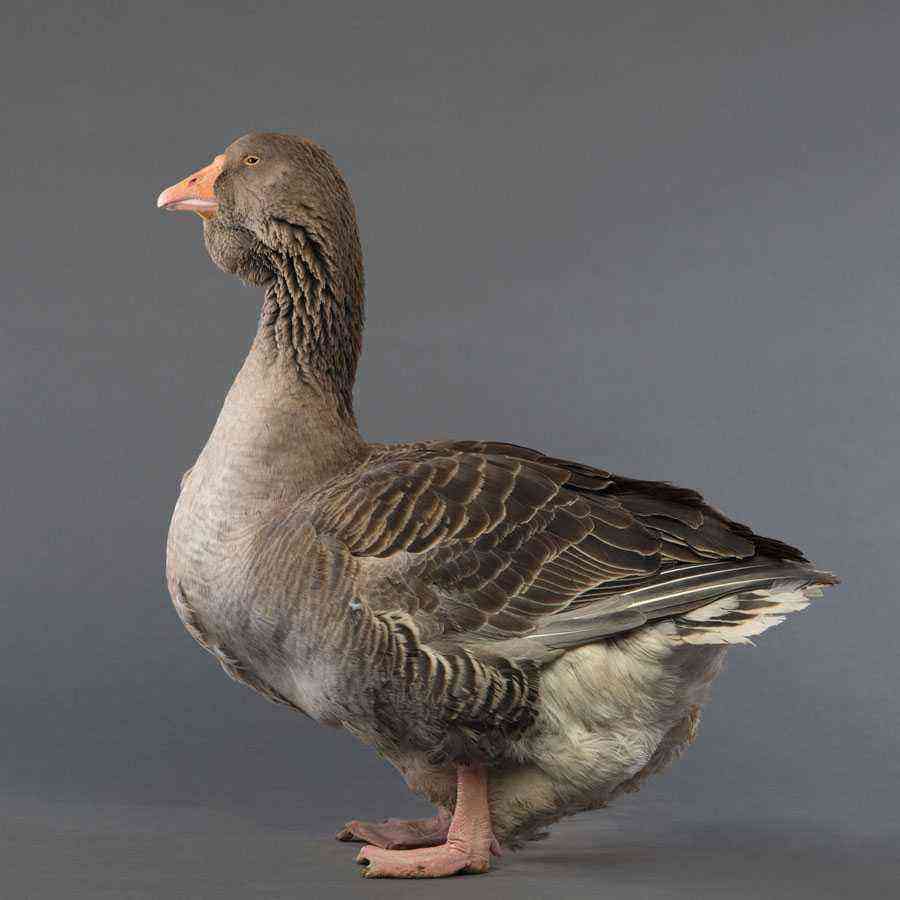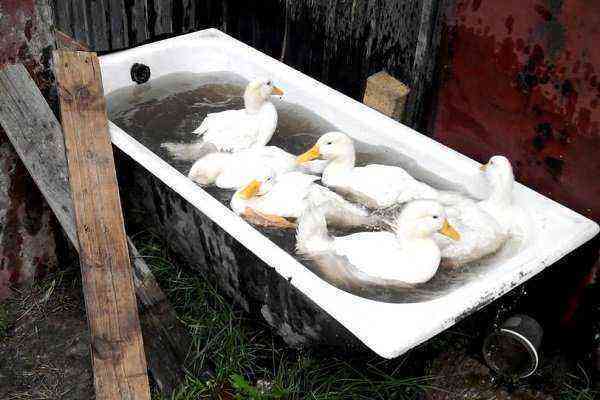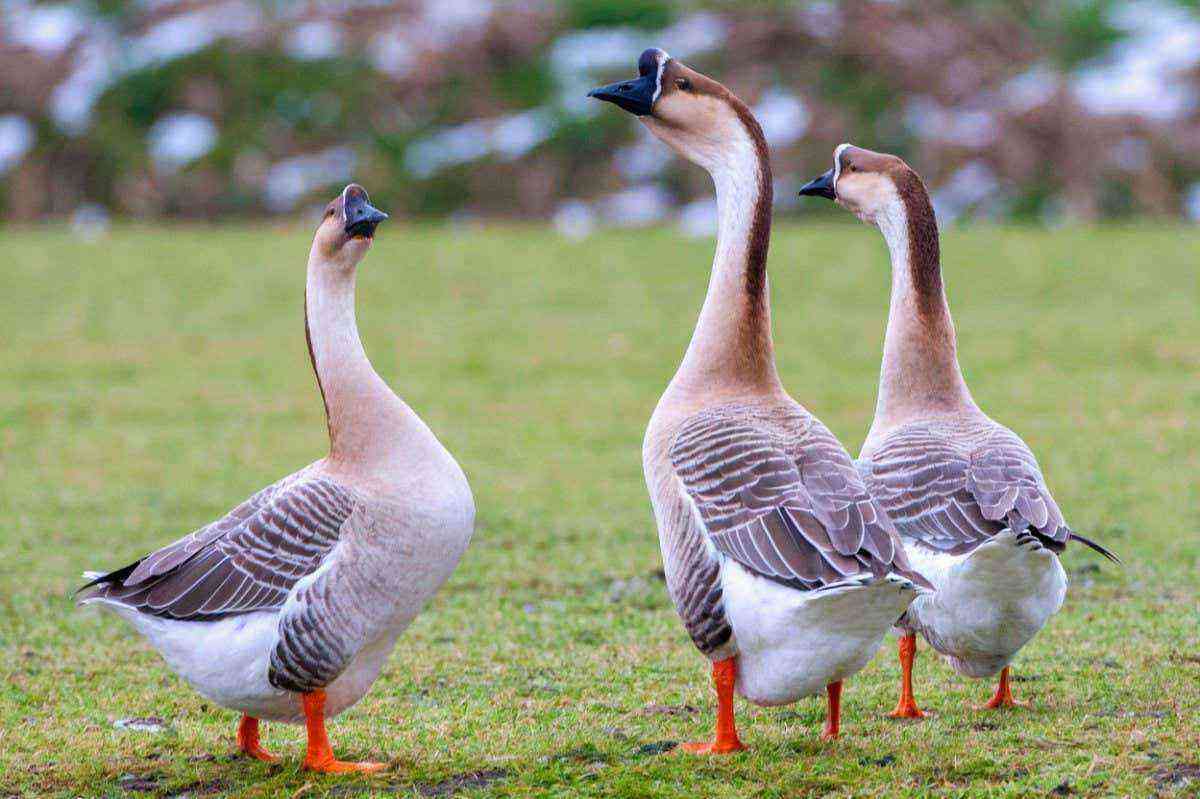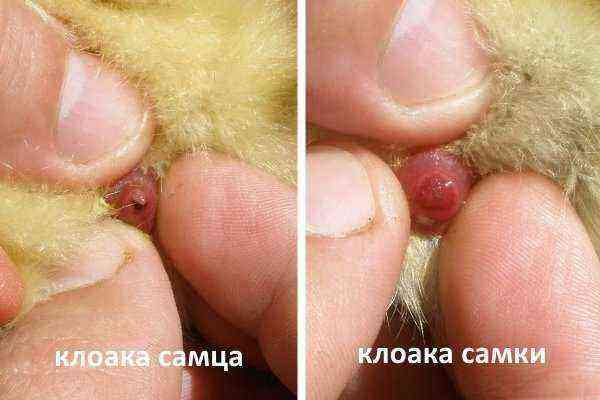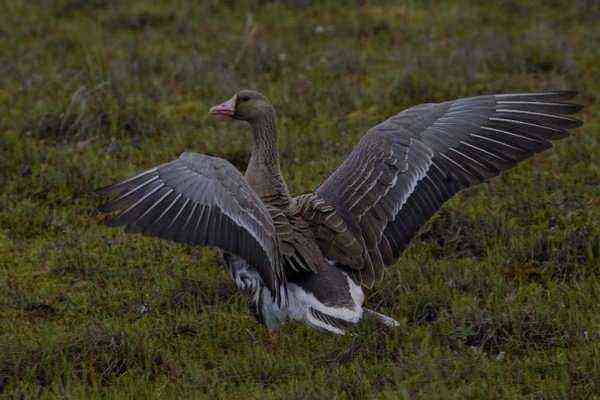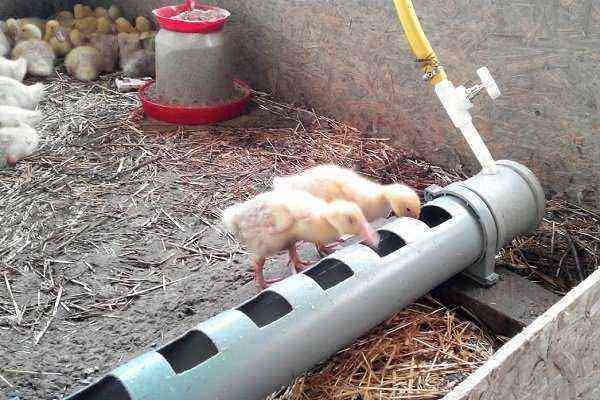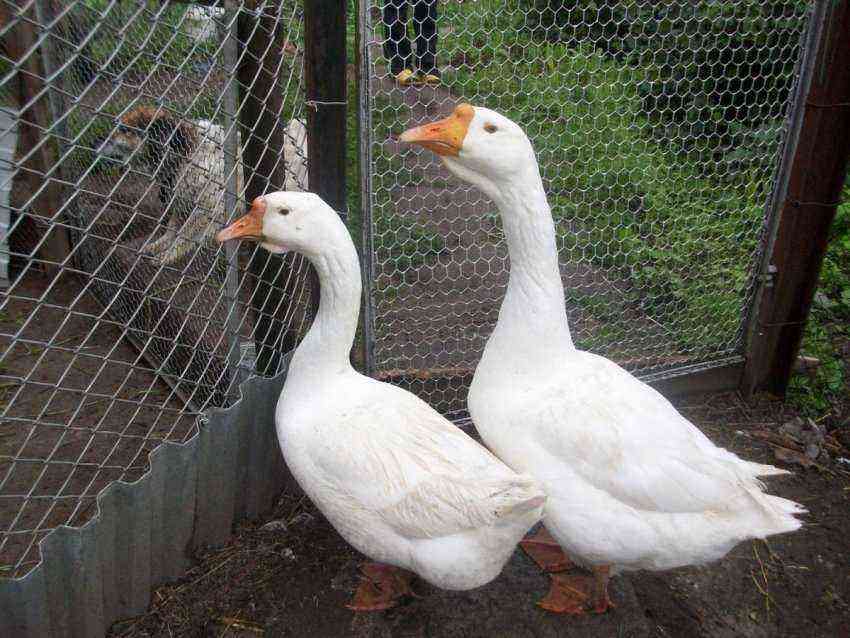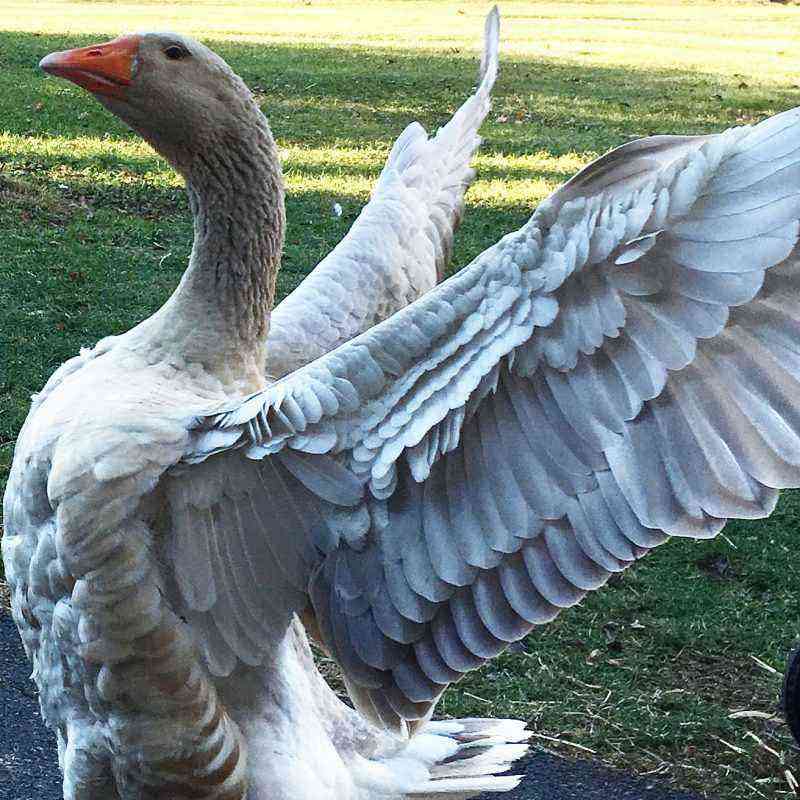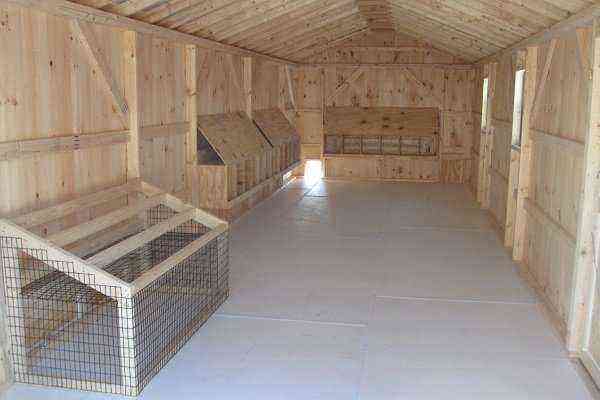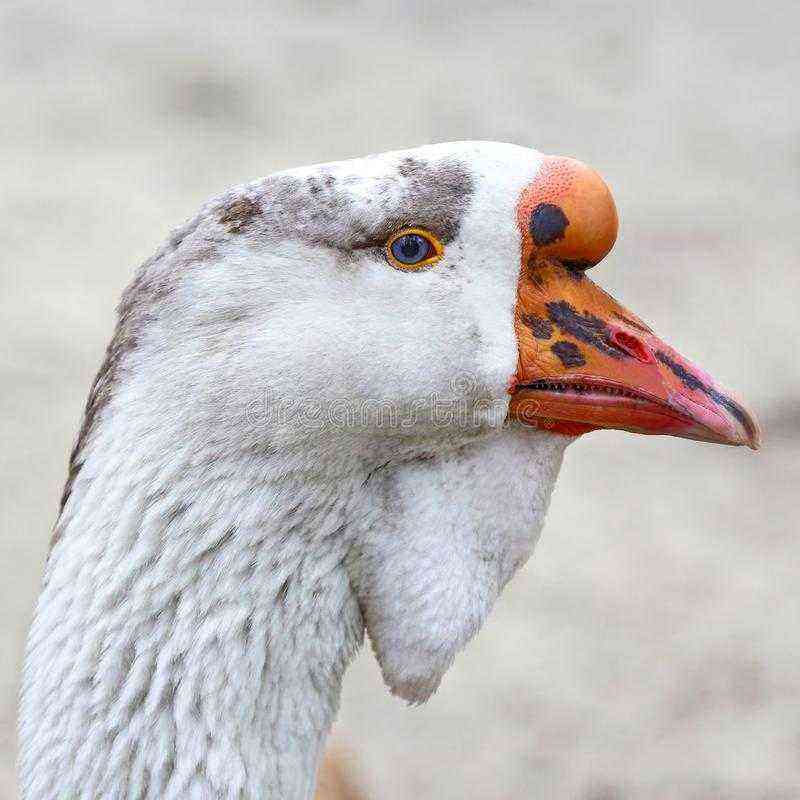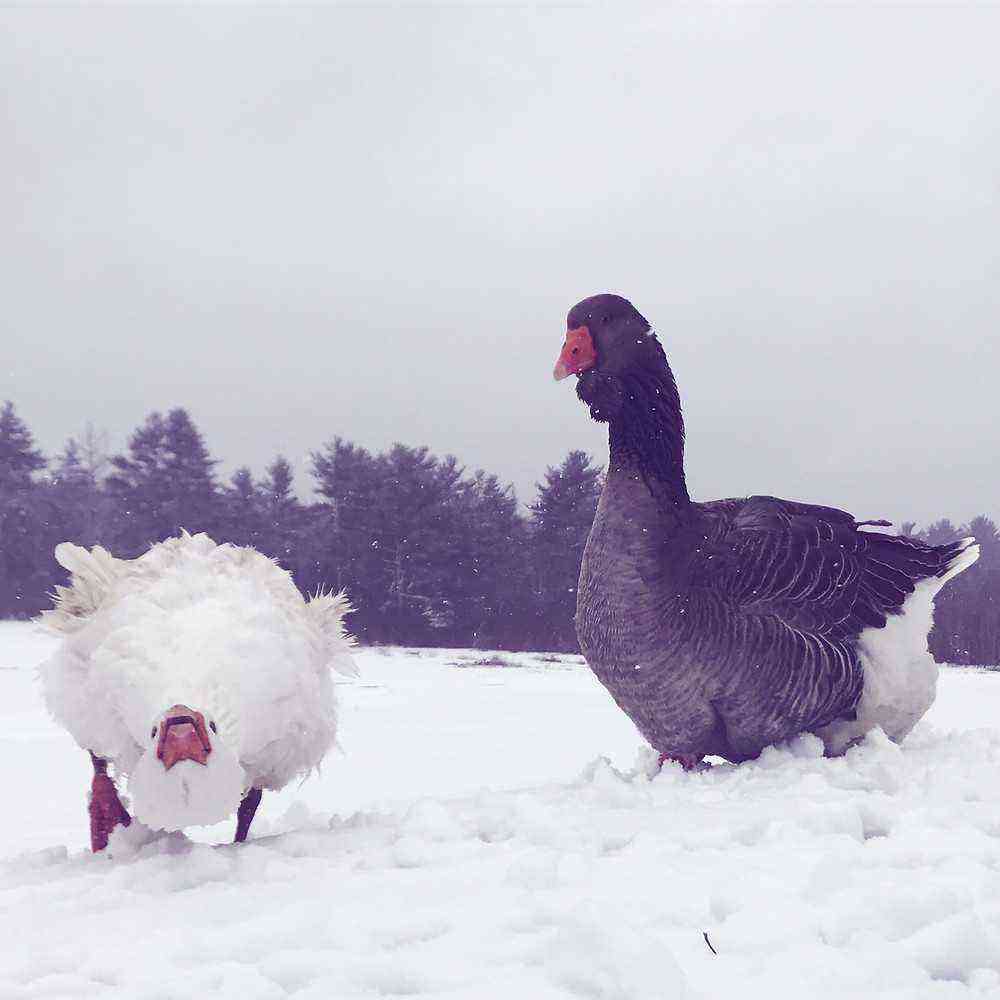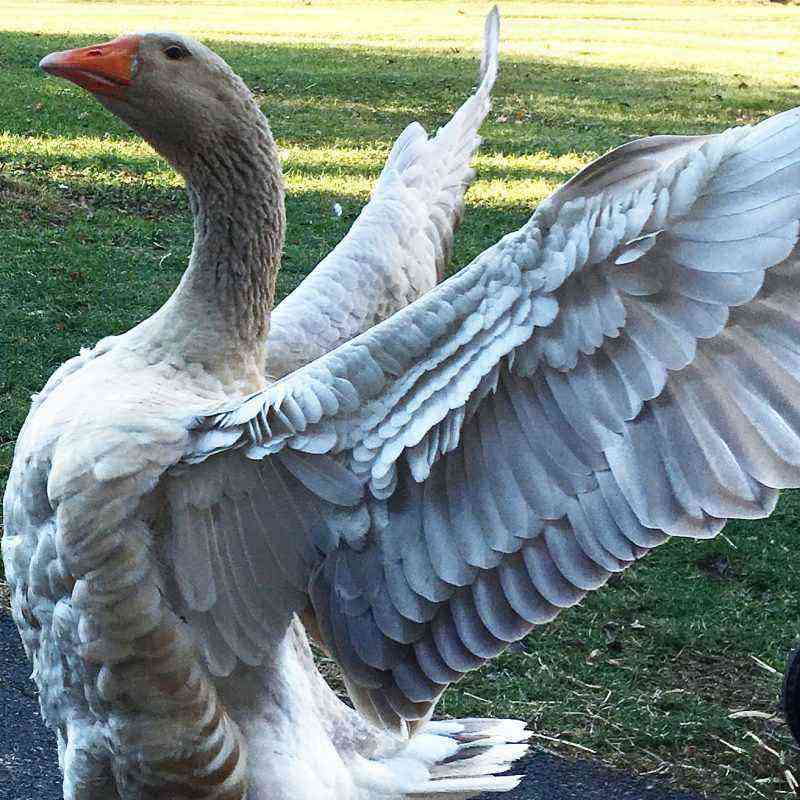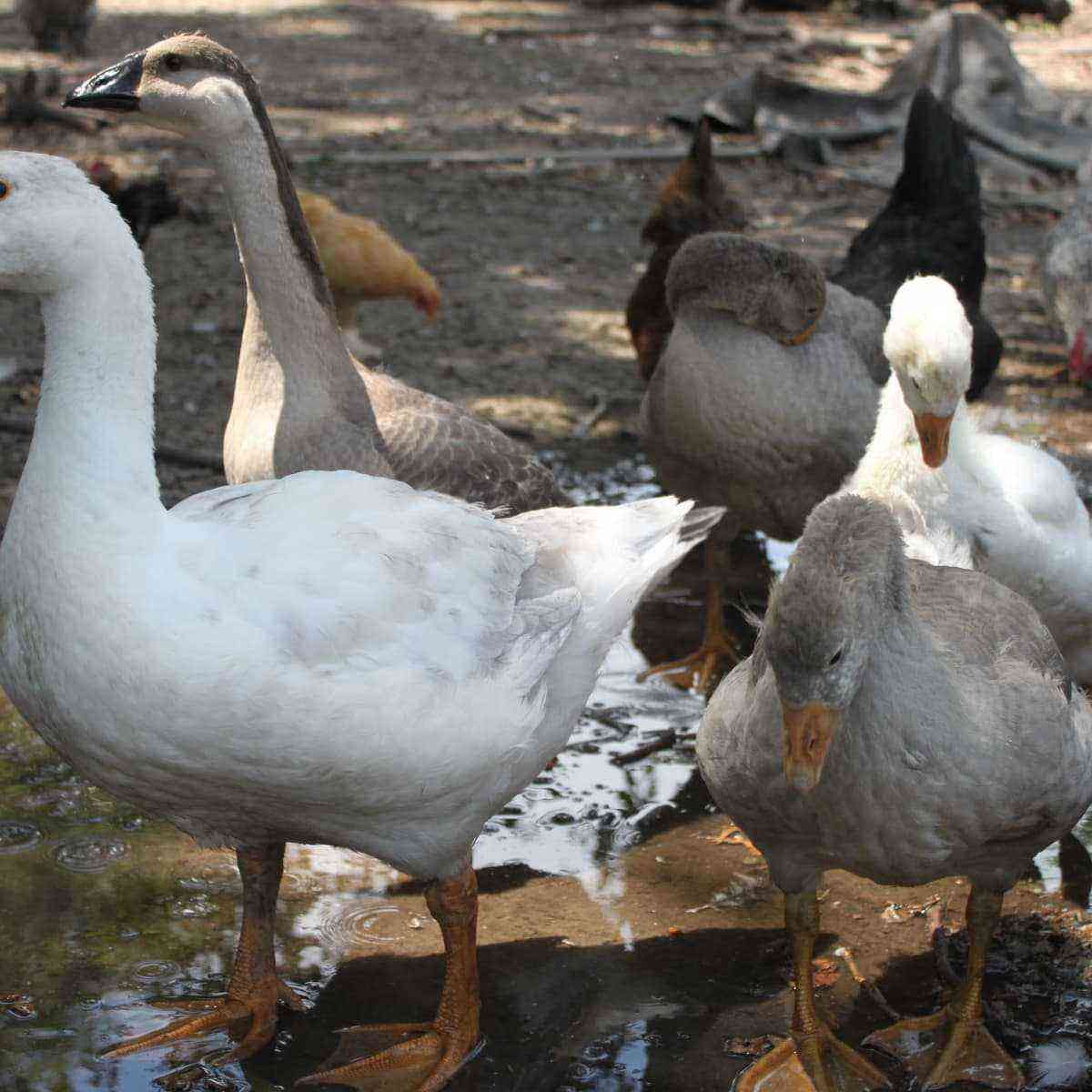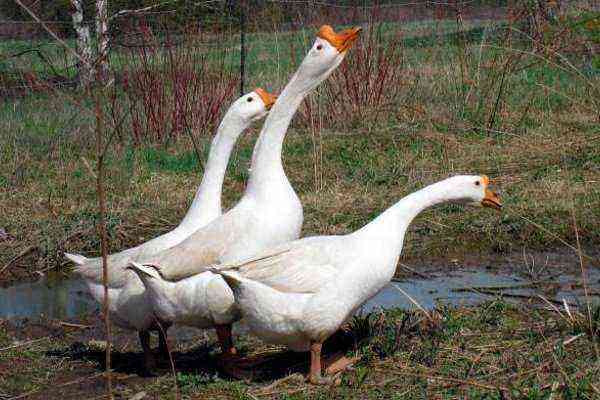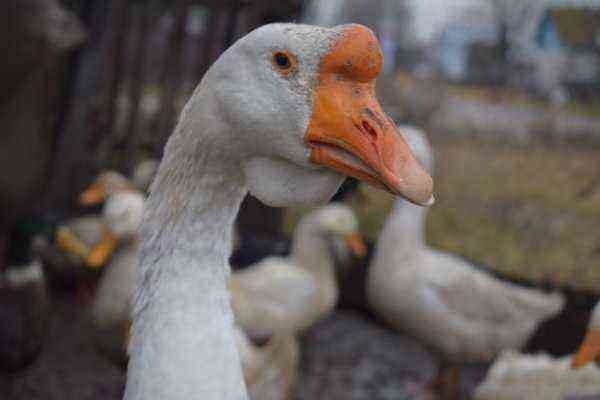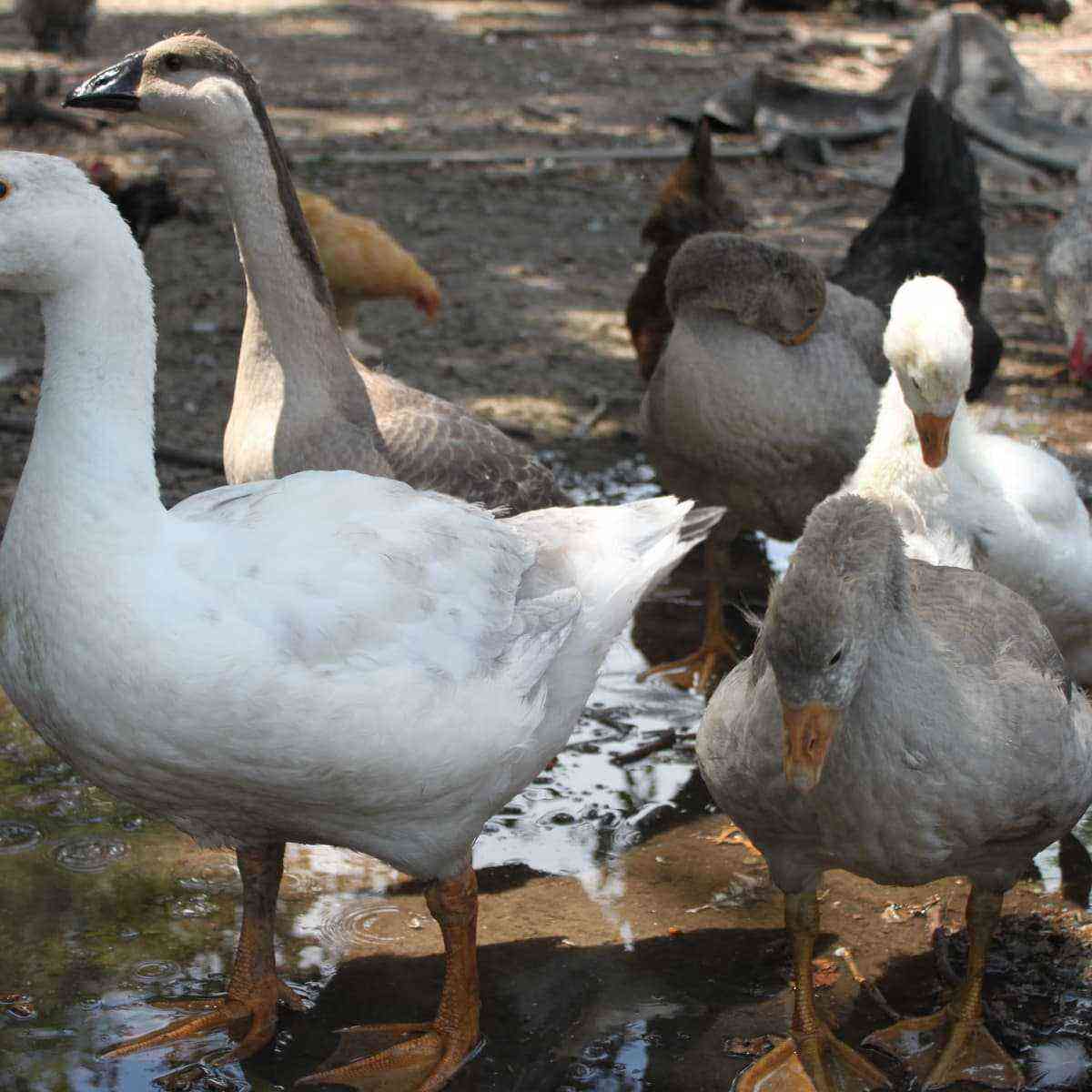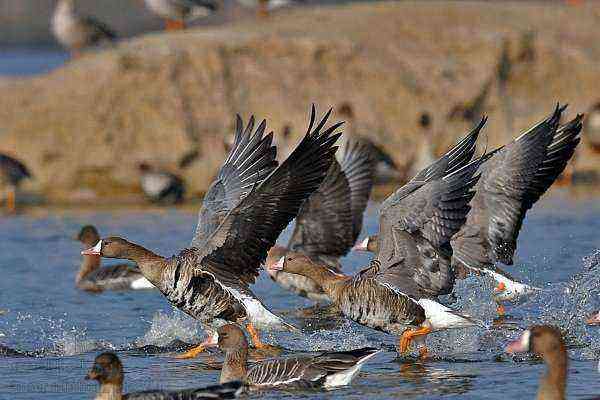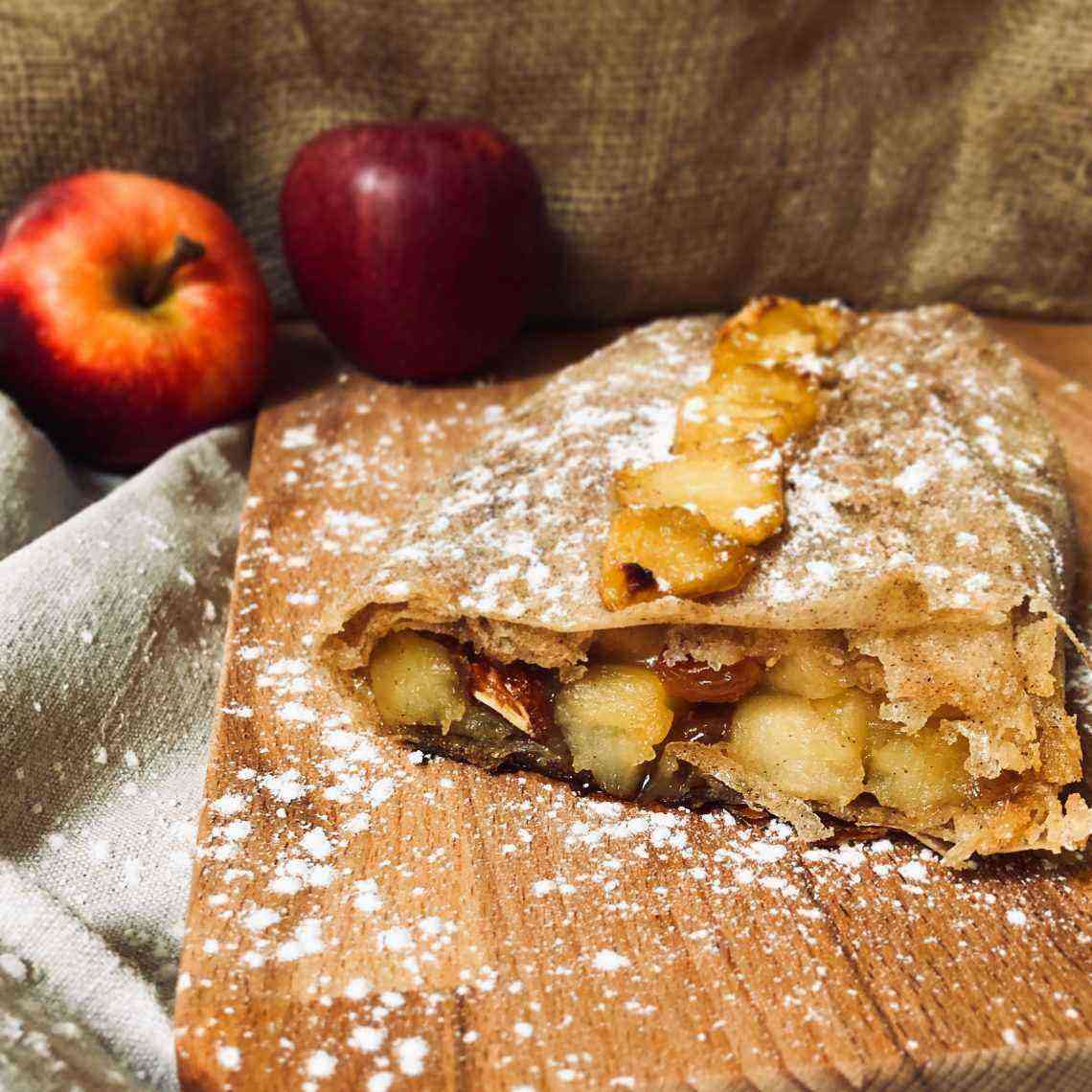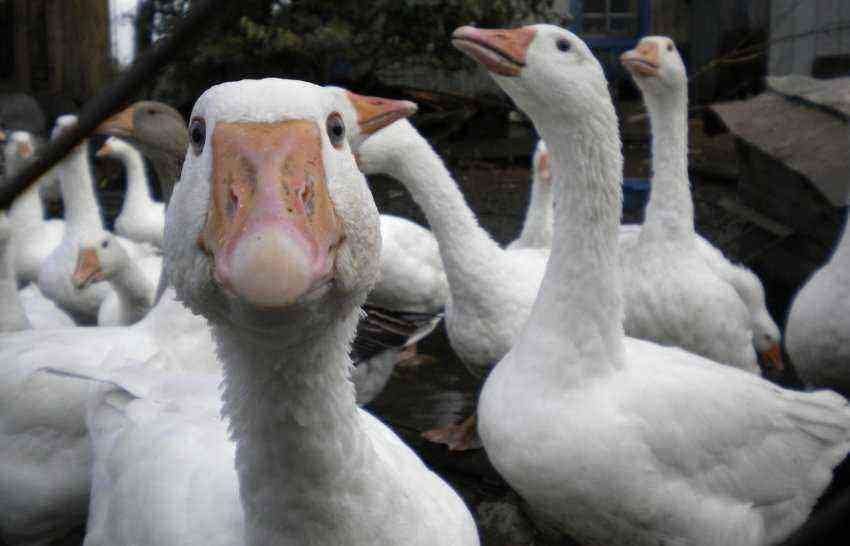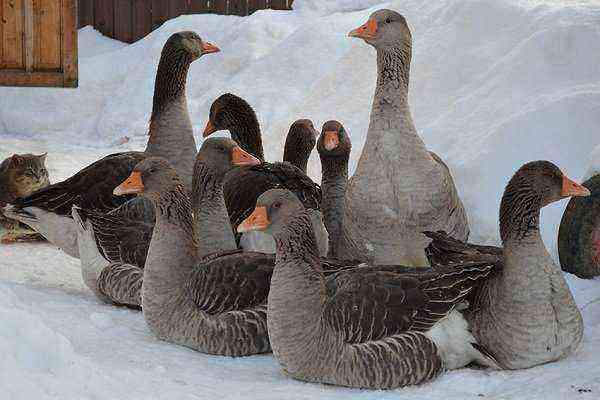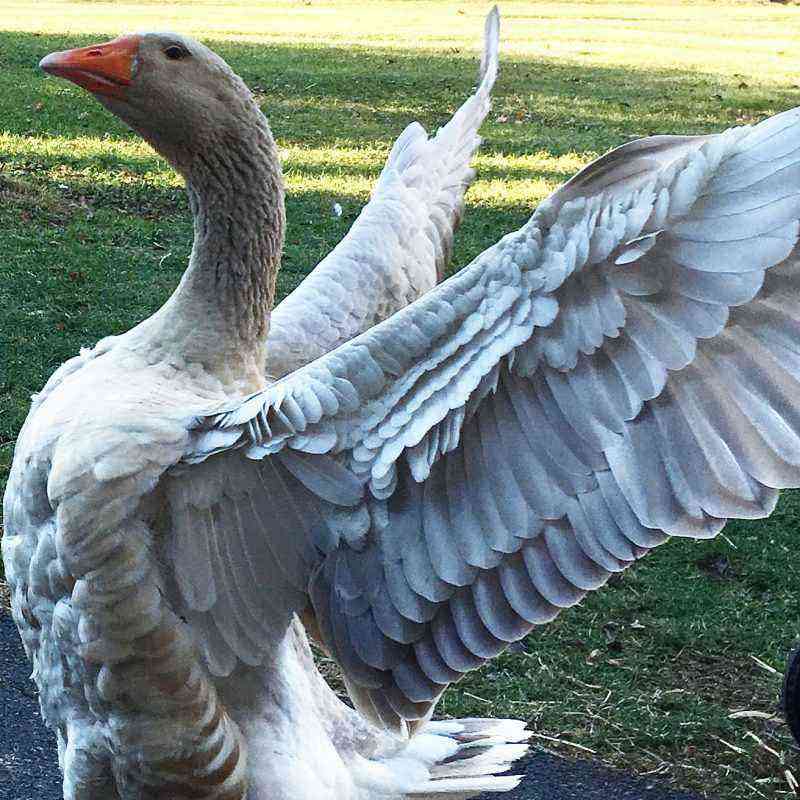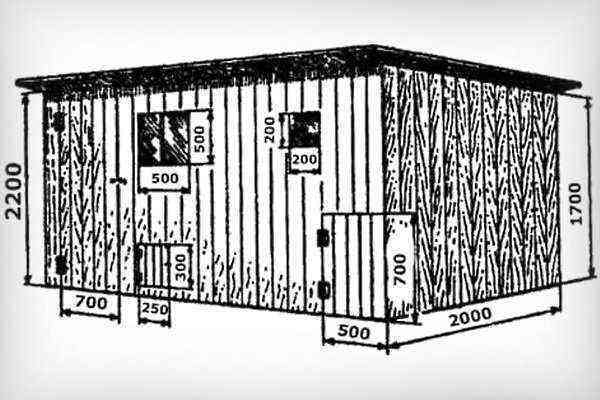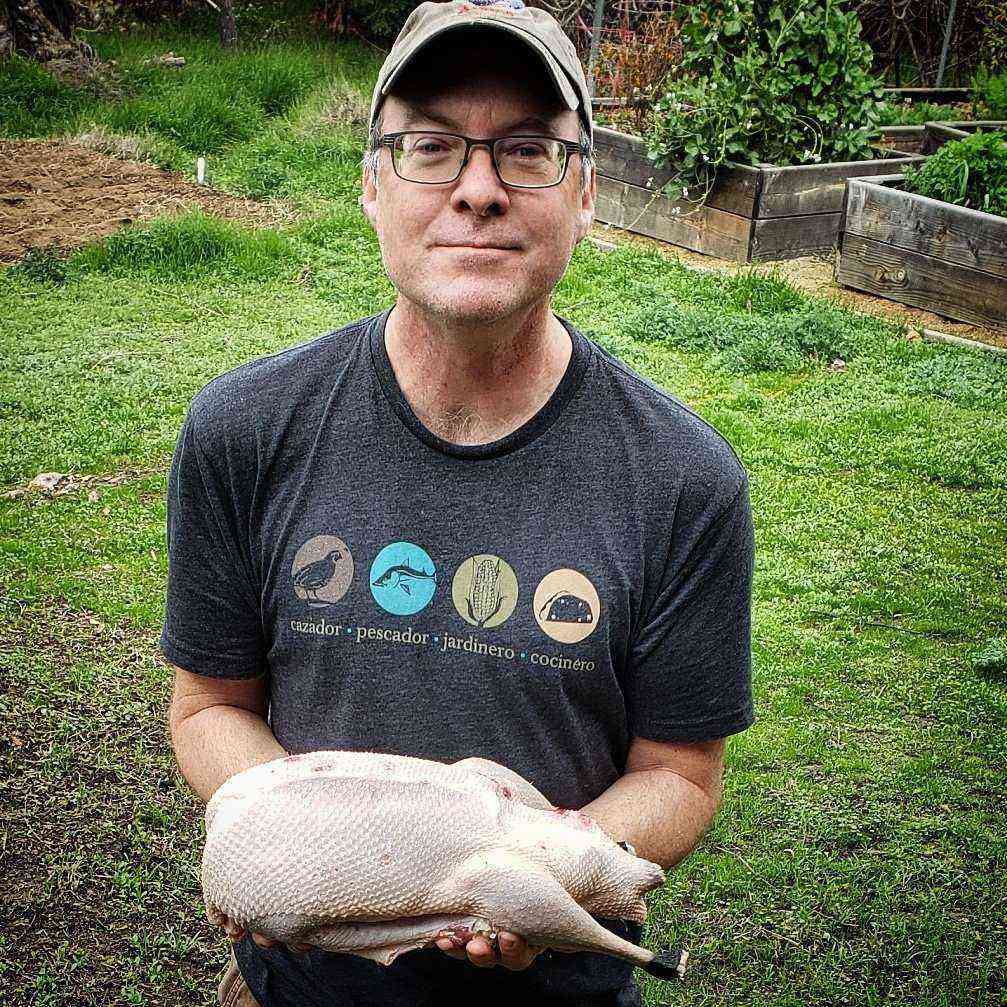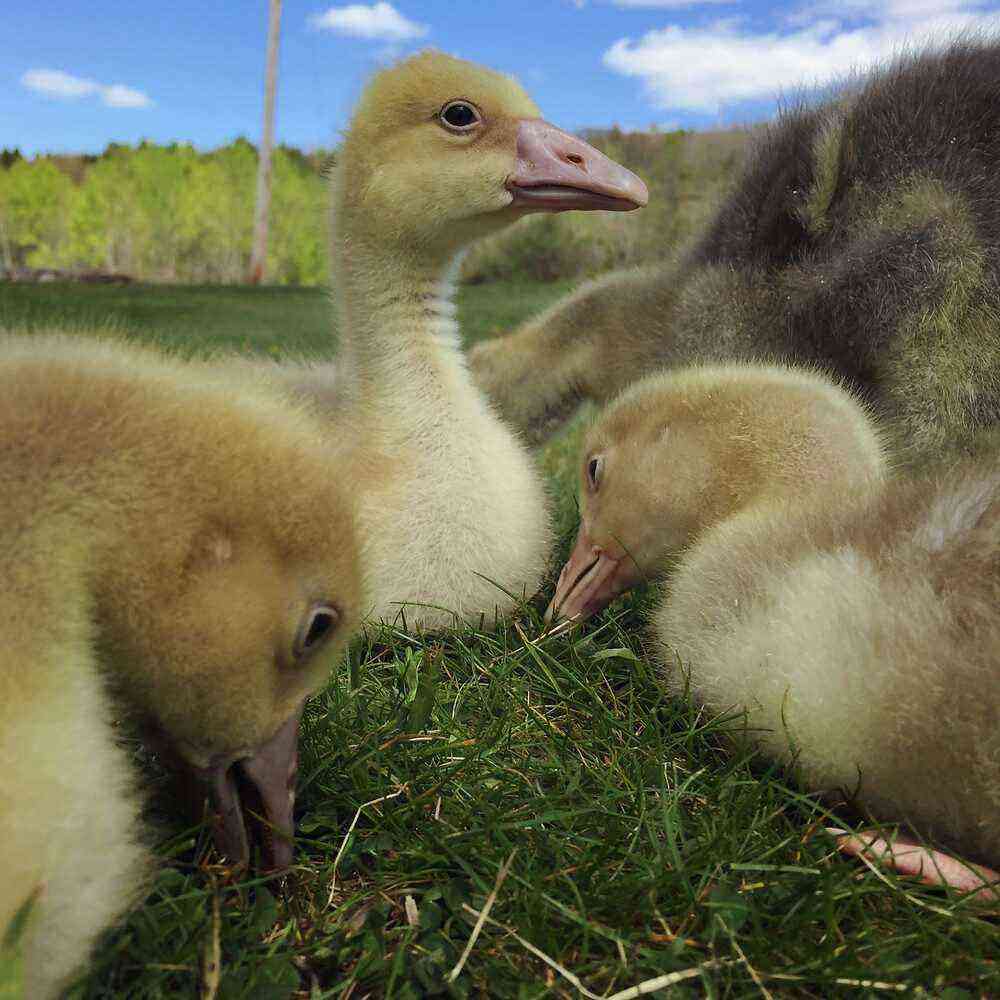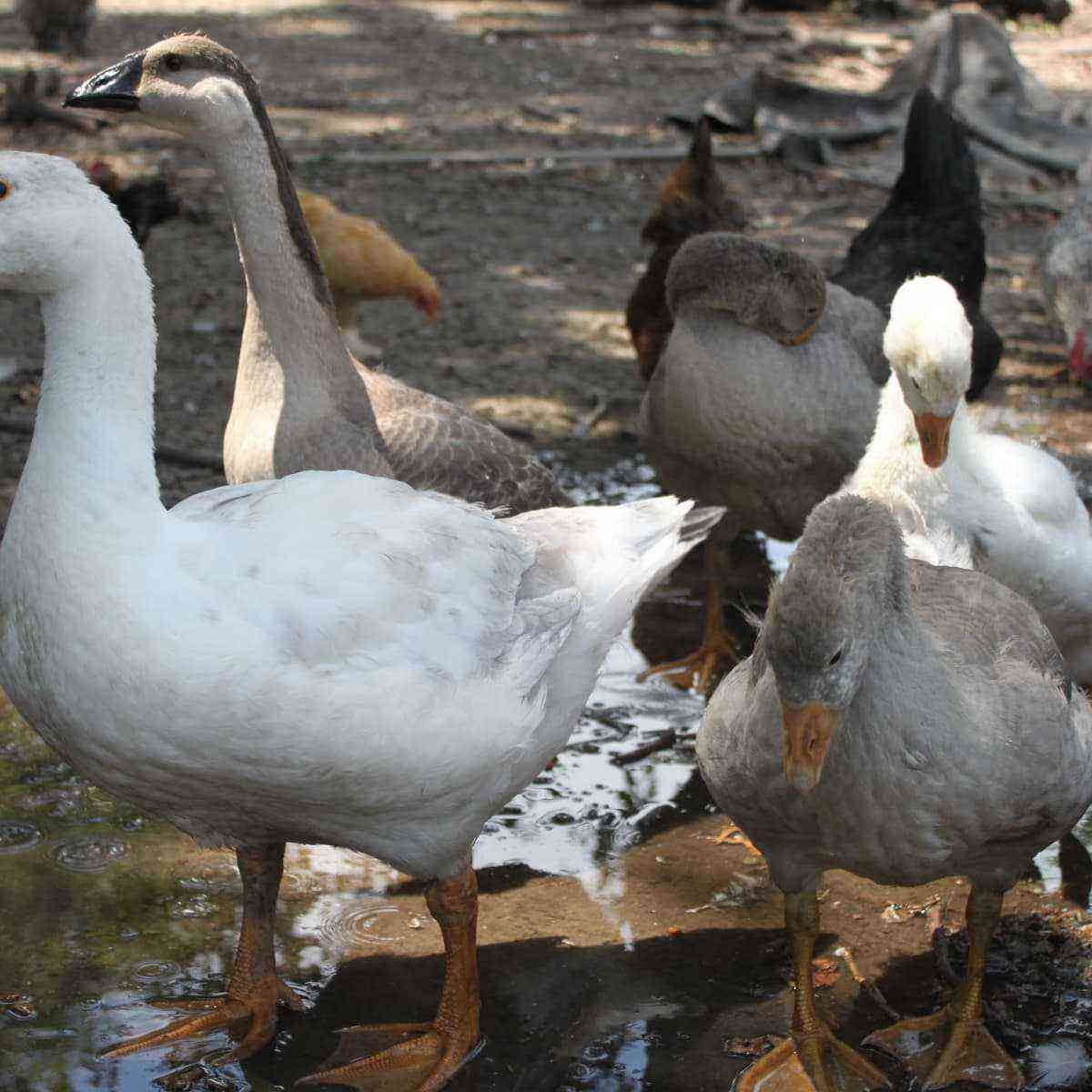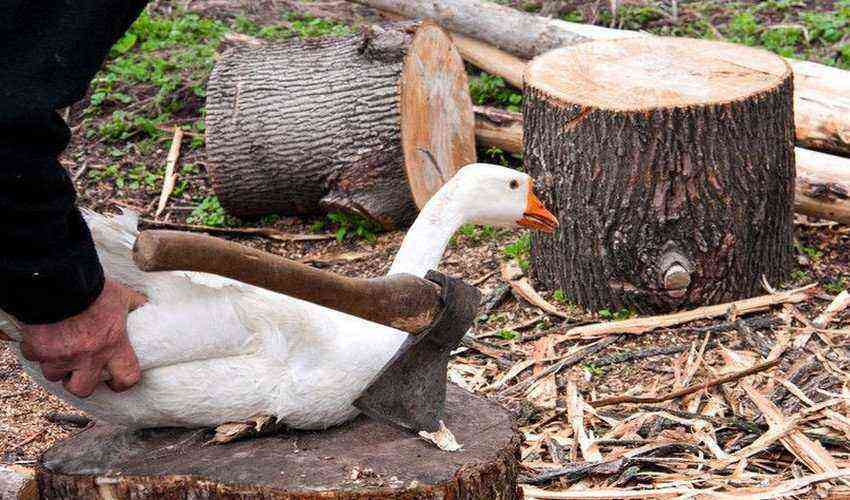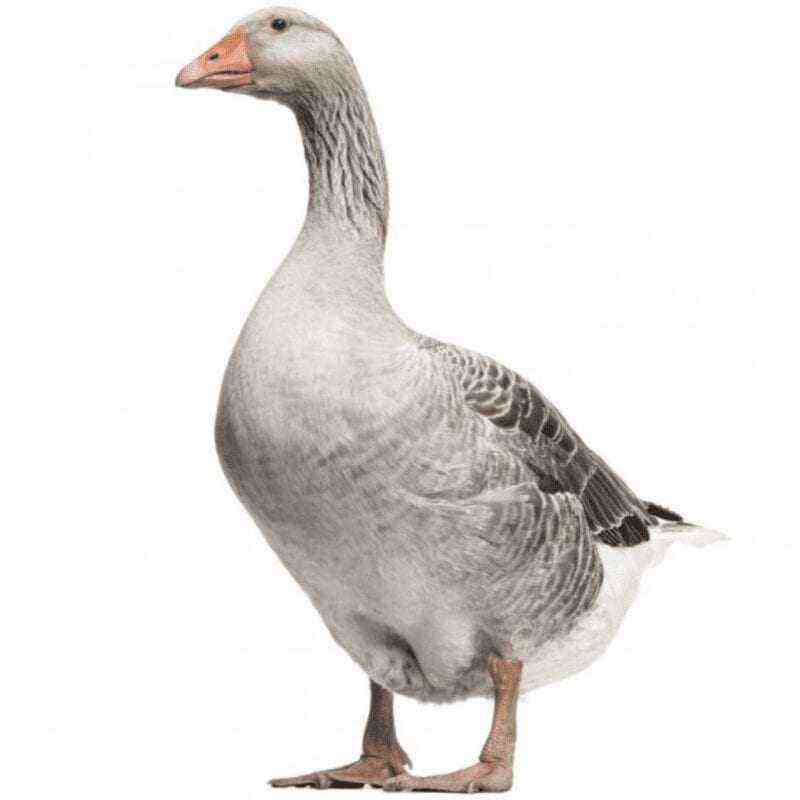A thick layer of down cover in geese reliably protects them from the most severe cold weather. But this does not provide the birds with a completely comfortable wintering. They will need equipped housing, a special feeding regime and compliance with some more conditions of detention.
Requirements for keeping geese in winter
Dense plumage and fluff really make the bird resistant to cold, even down to -40 ° C. Naturally, this will require proper content. Otherwise, due to constant dampness, the feather becomes dirty and loses its density, and the litter gets wet, which makes the legs of the geese freeze.
This can lead to disease and death of the bird population. Even a small shelter will help, where the geese will spend the night or wait out bad weather. It can be built from anything, and large cracks can be sealed with straw or rags when it gets cold.
So that dampness does not penetrate inside from the ground, it is better to make a plank floor and insulate it with bedding. Its height should be 50 cm, and suitable for manufacturing:
- hay;
- straw;
- sawdust;
- shavings;
- peat.
When the bedding is dirty on top, you can replace it or simply add fresh material.
You can remove the smell of ammonia in the goose coop by sprinkling the bedding weekly with superphosphate. Consumption will be 400 g per 1 sq. m. If you use double superphosphate, then it will need 2 times less. The tool will not only get rid of the unpleasant odor, but also dry the surface of the litter well.
It is not worth keeping geese indoors all the time. In mild weather, it is enough for them to spend the night in a shelter, and during the day it is better to walk outside. Even with a strong drop in temperature, geese are released for at least one hour.
Bird legs are not as resistant to frost as the body. Therefore, it is recommended to clean the snow in the walking area regularly.
Features of the winter keeping of geese
You can arrange wintering for birds in any empty building for household purposes. For example, a barn, a chicken coop or a greenhouse will do. The main thing is to properly equip the room in order to create the most comfortable conditions for the birds.
In the barn
Any wooden barn in which nothing is temporarily stored will become a reliable shelter. You can even quickly build it from old boards.
Barn preparation:
- Check if there are gaps in the walls. Cover them thoroughly with fresh straw or dry rags. Good sealant.
- If the gaps are very wide, put and nail a third on the junction of two boards.
- Equipping a barn from scratch, be sure to make windows. This will allow sunlight to penetrate inside, which means you can turn off the electricity during the daytime.
Geese will overwinter well in a stone or brick building. But even here it is necessary to make a wooden floor and fill it with bedding material.
If the room under the poultry house is well-insulated, you will not have to heat it additionally: the geese will emit heat with their bodies that is sufficient to achieve a comfortable temperature.
In the chicken coop
A simple barn is often not well equipped for wintering, so that the bird quickly gains weight and lays eggs. It is better to build a chicken coop equipped with:
- drinkers;
- feeders;
- nests.
Wooden troughs or low buckets are used for drinking bowls. It is recommended to upholster them with galvanized iron. It doesn’t rust or rot like wood does.
The feeder is constructed from two boards and several screws:
- Calculate the length of the boards, taking into account the number of birds. The more of them, the longer the space for feeding is needed. Otherwise, part of the herd will remain hungry.
- The height of the feeder should be at the level of the back of the goose. Fasten both boards to each other, observing an angle of 45-60 degrees. With a larger width of the feeder, the birds will simply rake the food.
- Stuff 2-3 cross bars on top of the feeders. They will serve as handles for holding the feeder in your hands when carrying it and thanks to them the geese will not rake the food out.
In order for the geese to have a place to rush, the house must be equipped with nests. They are made in the form of open-top boxes-boxes from plywood sheets or boards:
- Connect the boards so that you get a quadrangle 60 cm long, 50 cm wide and high. Treat the walls with lime mortar.
- Install nests along the walls. It is better to do this closer to mid-February, so that the birds get used to the place of incubation of eggs.
- On the front panel of each nest, make sills up to 10 cm high. Thanks to them, the litter will not get enough sleep and the eggs will not roll out.
- Line each nest with straw or hay from the inside. The box must be filled almost to the top.
Calculate the number of nests according to the norm: for every 2-3 geese, 1 nest.
In the chicken coop, you need to maintain the optimum temperature that is comfortable for the birds – not lower than +3 ° C. As a rule, the chicken coop has everything you need, so you don’t need to equip anything extra.
In the greenhouse
The best option, which does not require special expenses, is a greenhouse, from which all plants are removed by winter. The room is equipped, protected from wind and drafts, the glazed walls have good light transmission.
Greenhouse preparation:
- Strengthen the greenhouse by sealing the gaps, if any.
- If the winters are harsh, heat the greenhouse. This is especially true for film greenhouses, which will need additional heat during severe frosts.
- Carefully remove the remains of plants from the ground and level the surface.
- Spread a bed of straw.
This option of keeping poultry allows you to save on fertilizer application next spring before planting vegetable crops in a greenhouse.
The diet of geese in winter
Unlike in summer, in winter it is impossible to provide geese with ordinary grass and insects, which are an important part of a healthy diet. The winter diet is very different, it must be prepared according to certain rules.
Food
In November and throughout December, meals should be two meals a day. Morning feeding is a mash, and evening feeding consists only of whole grains. January should be spent on three meals a day, then through March inclusive (this is the time for laying eggs) – on four meals a day according to the scheme:
- day – wet mash;
- morning and evening – whole grains.
Forage grasses are required for nutrition in winter. They are given at 0,3 kg per individual daily. Nettle, alfalfa are recommended, and meadow forbs in the form of hay are also suitable. Such roughage can be added dry, but in a steamed form it is better absorbed:
- Chop large hay, pour boiling water.
- After 5-10 minutes, mix with chopped vegetables – beets, carrots, rutabagas or potatoes.
- Oat chaff is good to use instead of hay.
Geese are very fond of oats, it is added to food in its entirety. But wheat and barley cause obesity in birds in the home, which significantly reduces egg production. An important part of the diet in the winter months are dried herbs and leaves, acorns, and vegetables.
Rules for feeding geese in winter:
- Hay is harvested for geese in an amount of 15 kg per bird. It can be dried or ensiled meadow grasses.
- A useful addition would be brooms made from dry branches of linden, birch, willow, oak. Dry blanks need to be steamed and hung along the walls of the house.
- Be sure to harvest oak acorns. The norm is 6 kg per individual. Dried acorns are peeled before being added to the mash, and boiled for 1 hour.
- The lack of grain is replenished with raw and boiled potatoes. In order for the goose to get used to such food, grated potatoes are introduced into the diet of chicks from childhood.
- Mixture with the addition of potatoes and other vegetables is prepared at once, otherwise it may turn sour after a few hours. This will lead to a disorder in the gastrointestinal tract of birds.
- When replacing grain with potatoes, a ratio of 3: 1 is observed. For example, 3 kg of potato mash with herbs fully replaces 1 kg of whole grains.
When the mating season begins in geese, it is recommended to leave the oats in the feeder overnight. This is especially important for males: due to frequent sexual intercourse, they lose weight, and this affects the quality of fertilization.
It is better to feed ganders indoors while the geese are walking on the street. For top dressing, the following products are taken:
- whole wheat, barley, oats – 80 g;
- grated carrots – 20 g;
- baker’s yeast – 4 g.
Quantity is given per individual.
Vitamin Supplements
Even good food in the right volumes will not provide domestic geese with the necessary trace elements. The reason for this is the lack of sunlight, cold, lack of fresh grass and insects, low mobility. Therefore, it is necessary to introduce vitamin supplements into the diet.
Nutritional supplements are easy to make yourself. For example, to provide the body with vitamins A and D, fish oil and sprouted wheat are added to the feed. Sprouted wheat is prepared as follows:
- Pour barley with water at room temperature and leave for 2 days in the room.
- Scatter the swollen grains on a flat surface so that they almost do not touch and the layer is even.
- On the 3rd day, sprouts will appear. In a couple of days they will get stronger, each grain will “hatch”, and you can add the resulting product to a wet mash.
In winter, birds will also need substances containing calcium and minerals. Suitable for this:
- shell rock;
- shells of nuts, eggs;
- a piece of chalk.
You can give these substances together or separately. The main thing is to grind them well so that the geese are more comfortable eating. It is recommended to add fine gravel: it helps the bird’s stomach to digest food.
Drink
It is a mistake to assume that snow will replace water for poultry in winter. In fact, the drinking regime for geese in the cold season is more important and more difficult than in summer.
The lack of fresh water will cause circulatory disorders in birds, which will lead to a breakdown of the nervous system. This state will turn into constant aggressiveness or, conversely, lethargy. In any case, the geese will decrease egg production.
The amount of water will be required at the rate of 2 liters per day for each bird. The capacity of the drinker must be uncontaminated, therefore liquid stagnation must not be allowed. The water must be changed every day.
Try to make a drinking bowl, the water in which will be flowing. But if this is not possible, use wide low buckets, wooden or galvanized troughs that can be easily emptied and rinsed.
Goose care in winter
Due to worsening weather conditions, winter care is more thorough than summer. Its rules are simple, but observance is mandatory:
- Keep the plumage clean. A dry and clean feather will protect birds from hypothermia and diseases. Therefore, change the bedding to dry material regularly.
- The minimum suitable temperature in the poultry house in winter is +3…+5 °C. Below this level, geese will have to eat more and stop rushing to maintain energy.
- For the entire breeding season, a bird needs a long daylight hours, about 14 hours. And if in summer this is a natural duration, then in winter, equip the goose coop with lighting fixtures at the rate of 5 W per 1 sq. m. Turn on the light at about 5 am, turn it off after sunrise. Evening shutdown – from the beginning of sunset to 19 hours.
- Provide food for the males. They take care of the geese and often stay hungry because they wait for the females to eat. Ganders need to increase their feeding rate by 20%.
Please note that each gander in good condition, strong, healthy and well-fed, will qualitatively fertilize 3-4 geese, ensuring their high egg production.
Walking organization
The area where the geese walk must be prepared. You need to do the following:
- Remove snow from the territory so that the fluff and feathers do not get wet.
- Cover the surface with straw – this will protect the paws from freezing.
Each walk should last at least an hour. You can release geese to swim in the nearest body of water. To do this, during the thaw, prepare an ice hole in advance. Swimming is not recommended during frosts, as too cold water will lead to hypothermia of the paws.
Disease Prevention
The main problems that can cause illness in a bird during the cold period are as follows:
- a sharp change in diet, as a result – a decrease in immunity;
- lack of physical activity as a cause of metabolic disorders and obesity;
- dampness and drafts, causing hypothermia and colds.
Most often, the organization of proper nutrition and walking helps to avoid these problems. It is important to keep the entire area where the herd lives clean. But it will not be superfluous to comply with medical safety measures, namely:
- Before settling the birds, completely clean up the goose house, disinfect the surface and equipment using caustic soda (2% solution).
- Replace bedding at the latest when it is a quarter dirty.
- Stick to your veterinarian’s recommended avian vaccination schedule.
- Make sure that there is no infection with helminths and other parasites, take action when a problem is detected.
- When new birds appear in the herd, arrange quarantine for them.
- Completely exclude contact of domestic geese with wild birds.
- If you see a sick goose, immediately isolate it from the rest of the herd and contact your veterinarian.
Do geese lay in winter?
Already in early February, domestic geese begin to lay eggs. It is important to notice this in time in order to control the process. Egg laying occurs at night or early morning. They are harvested while still warm to prevent freezing or other damage.
If the eggs are left inside the nest, the female will switch to incubating them and refuse to wear them.
The collected eggs are transferred to a dark and dry place with a temperature of +5 … +12 ° C and laid out horizontally. So they can be stored for 10 days before being placed under the female for further incubation.
If the geese did not start to rush at the right time, then the conditions of detention were violated, namely:
- the room is dark;
- the duration of daylight hours is not provided;
- it is too cold in the goose house, damp or constant drafts;
- birds do not have enough food or drink;
- geese have beriberi.
The fact that the goose is ready to rush is evident from the signs of external anxiety. The bird tramples on the spot, rolls over to the sides when walking, lowers and draws its tail. Most often, she is at the nest, carries straw into it and warms it with her feathers and down.
Geese have long been domesticated by man precisely because their maintenance and care do not take much effort, time, and do not require special skills. It is enough to adhere to simple conditions and you can get a large and healthy herd.
